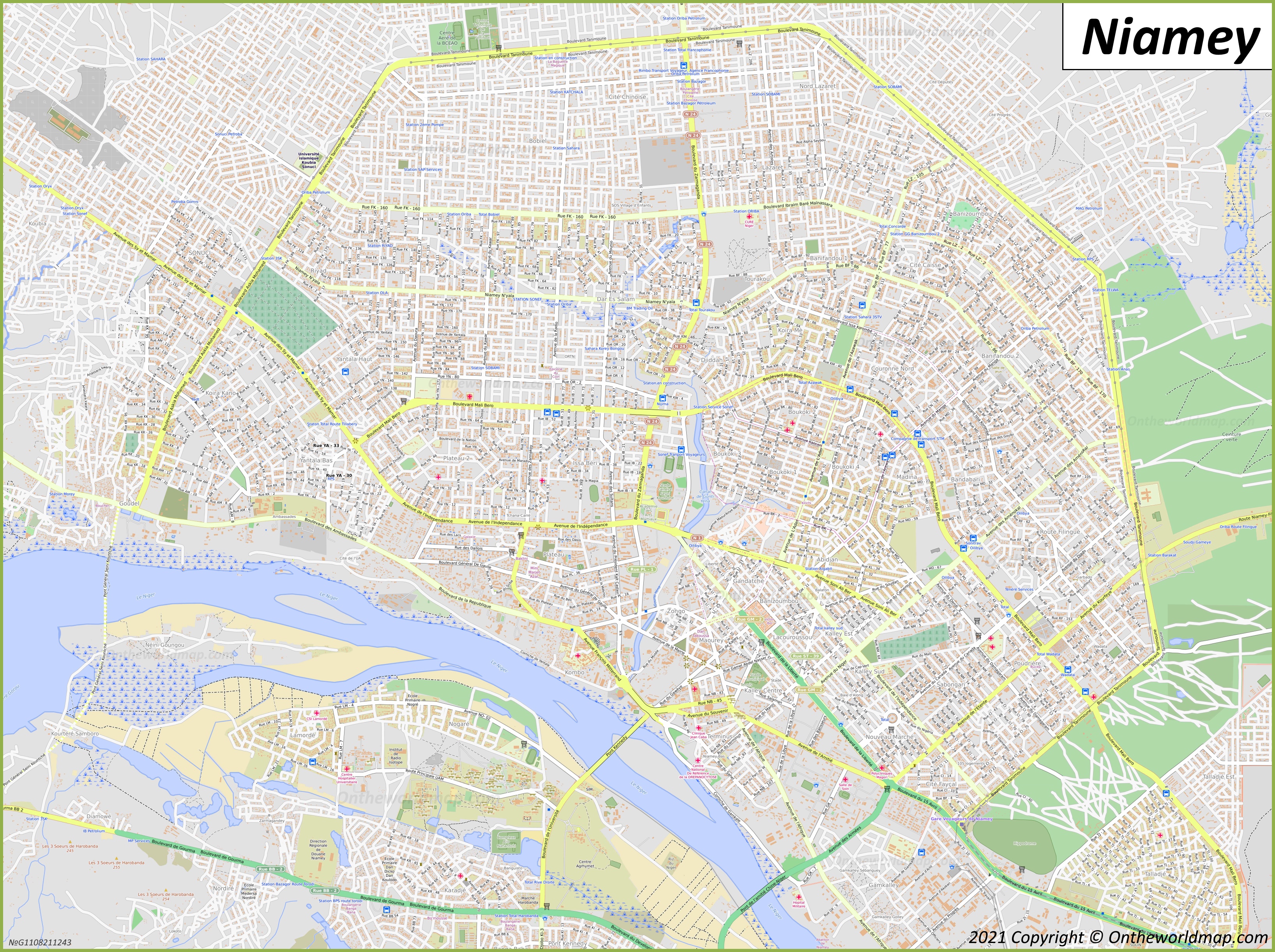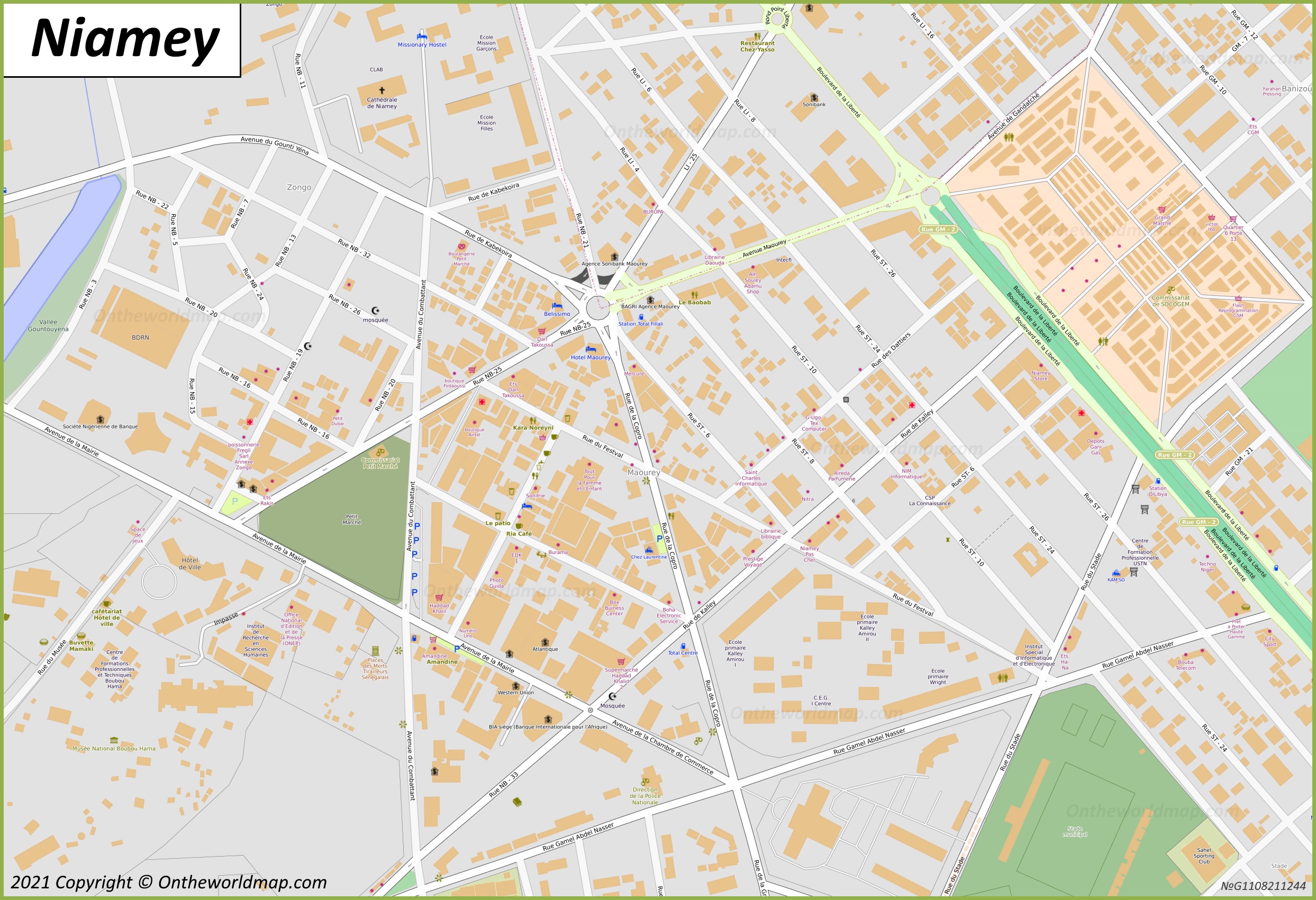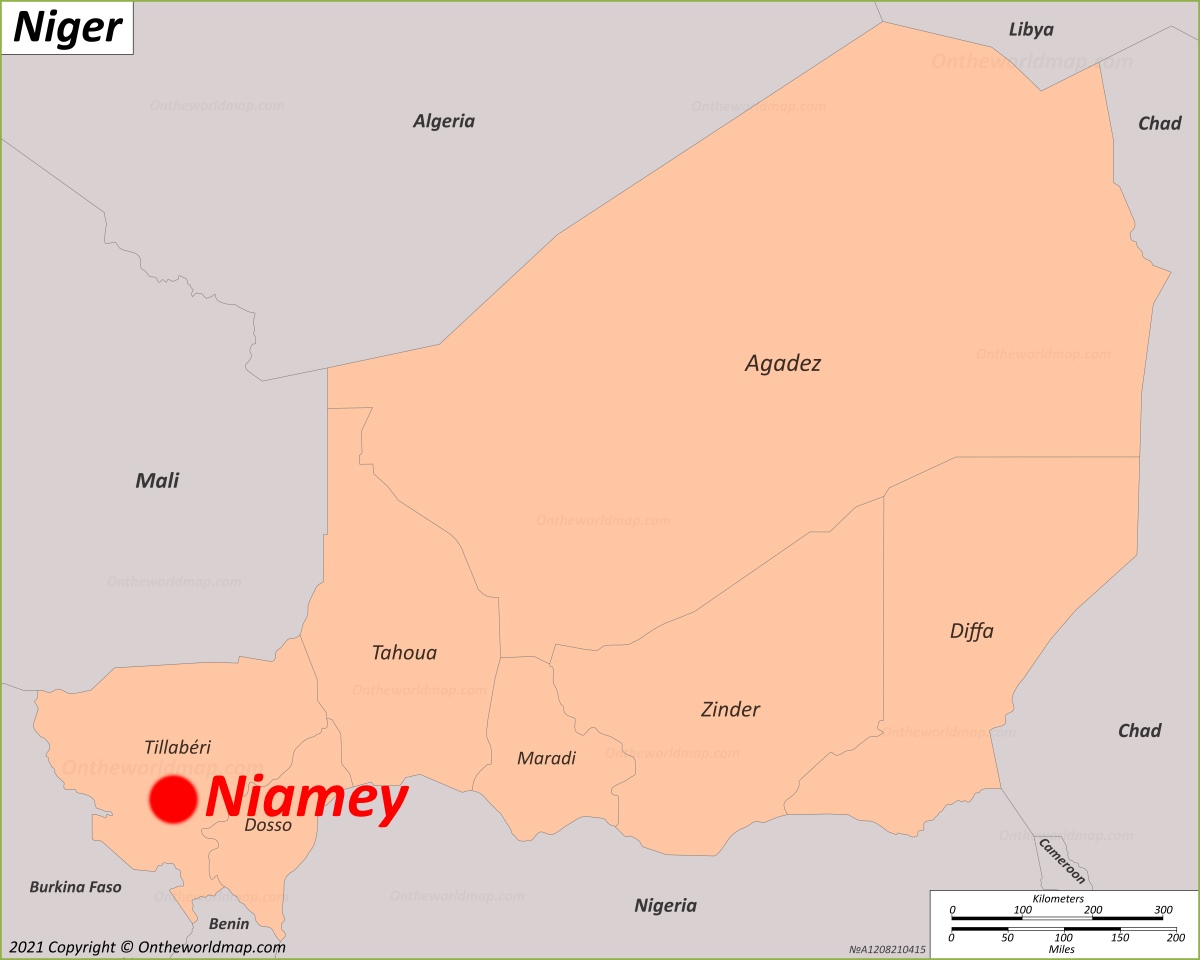Niamey Map
Description:
Size: 3272x2443px / 4.38 Mb
Author: Ontheworldmap.com
Map based on the free editable OSM map openstreetmap.org.
You may download, print or use the above map for educational, personal and non-commercial purposes. Attribution is required. For any website, blog, scientific research or e-book, you must place a hyperlink (to this page) with an attribution next to the image used.
Description:
Size: 2487x1701px / 1.35 Mb
Author: Ontheworldmap.com
Map based on the free editable OSM map openstreetmap.org.
You may download, print or use the above map for educational, personal and non-commercial purposes. Attribution is required. For any website, blog, scientific research or e-book, you must place a hyperlink (to this page) with an attribution next to the image used.
Online Map of Niamey
About Niamey
Niamey is the capital and largest city of Niger, situated in the western part of the country along the Niger River. With a population of approximately 1.3 million people (2020), it serves as Niger's administrative, economic, and cultural center. The city experiences a hot desert climate with long, hot dry seasons and brief rainy periods.
Founded in the 18th century as a small Zarma village, Niamey significantly grew after being selected as the capital of Niger by French colonial administrators in 1926. Since Niger's independence in 1960, the city has expanded rapidly, transforming from a small colonial town into a major urban center. Today, it hosts numerous government institutions, including the National Assembly, Supreme Court, and various ministries.
The city's economy is primarily based on administrative activities, commerce, and small-scale industry. The Niger River plays a crucial role in local commerce and transportation. Niamey's international airport, Diori Hamani International Airport, serves as the country's primary aviation hub, connecting Niger to other African nations and international destinations.
Notable landmarks include the Grand Mosque of Niamey, built in the 1970s with funding from Libya, and the National Museum of Niger, which houses an impressive collection of artifacts representing the country's cultural heritage and prehistoric periods. The Kennedy Bridge, completed in 1970, is the only bridge crossing the Niger River in the capital. The city also features the Abdou Moumouni University, Niger's largest higher education institution, established in 1971.

Despite its role as Niger's primary urban center, Niamey faces significant challenges, including rapid population growth, limited infrastructure, and periodic flooding during the rainy season. The city continues to expand, particularly in its suburban areas, where many residents live in informal settlements. Urban planning and infrastructure development remain key priorities for local authorities as they work to accommodate the growing population and improve living conditions.
The Facts:Region: Niamey Urban Community.
Population: ~ 1,334,984 (Estimate 2020).
Communes of Niamey: Niamey I, Niamey II, Niamey III, Niamey IV, Niamey V.
Main sights: Niger National Museum, Zoo, Niamey Grand Market, Niamey Grand Mosque.
Maps of Niger
Cities of Niger



